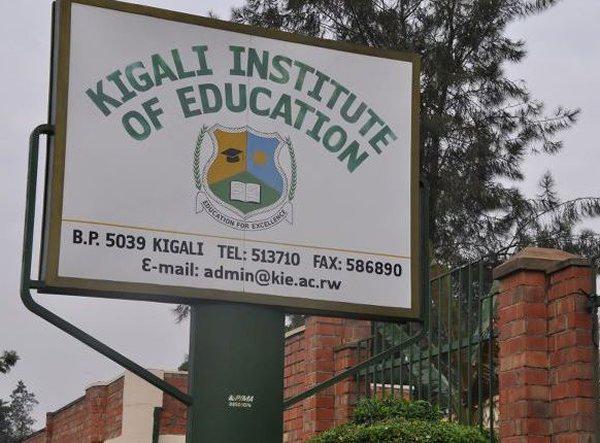Peace and Trauma, Part II
PART II
Vocabulary
Peace and dramaturgy
Theater and performance
Community Theater’s contract with community
Institutional approaches
Cases
Peace:
The chant is “no justice, no peace,” and art for social change, social justice, for peace—the terms tend to slide. The overlay is in the Solomonic framing, where justice isn’t a judgment but the creation of circumstances where nature can reveal itself. Gaçaça (the recent system of truth telling and assessment used in Rwanda) is imprecise according to certain standards in deciding cases; I’d argue that it is a remarkable option for turning cases into socially held stories—that man’s wife wore my dead mother’s bloody dress. Say it—say the word—this makes space for wonder, for memory (which is dynamic).
Word—Parabla—parable—parabola—to get next to something. This nearness, without landing on and crushing the thing it describes, is art’s gentle precision. The theater of this has more to do with justice than a prison, where crime is a kind of capital: you are defined by your sentence rather than your question; questioning stops. Neither hell nor heaven for that matter are meant to be prisons—they are stagings of your own nature. They take your place. You are what you let save you.
Trauma is addressed through gaçaça by a restored ability to see—the killer is in front of me, not in my head. Performance in a space of social turmoil may not result in plans of action—it is the action—what we do we do by knowing, by sharing knowledge, and by testing knowledge against wisdom—do our actions promote or fight against clear sight and tolerance.
Institutions are not safety, but anxiety over safety. Will you put your faith in anxiety, and magnify your anxiety? Will you trade security for a prohibition against improvisation? You are what you let save you. Theater and peace, even theatrical and peaceful institutions are anti-institutional. An institution holds resources apart. How do our institutions promote transparency to the point of invisibility, and how are they the property of the audiences we serve?
Justice is the defense of nature’s ability to define itself. Human nature is plural. Effect diversity, where we are distinct but in bond, as the portico of the architecture of art and peace.

Justice is the defense of nature’s ability to define itself. Human nature is plural. Effect diversity, where we are distinct but in bond, as the portico of the architecture of art and peace. In true diversity, the good isn’t purged from evil. The perfection of hygiene is a fascist too. Peace, then, is opened out by Justice. Also: Faith, Hope, Charity. And above all these, levity.
Faith:
A standing up out of one’s own grave, moving from the entrapped self to Citizenship—we may be beheld. Catharsis is resurrection—the conversion of personal potential into civic potential. Theater happens when the personal is made public. The private narratives of the actors, patience of the managers, the leadership of the technical directors, are suddenly understood to be relevant to the world. Catharsis happens at the beginning of a play, it is the premise, the cost of admission. As they say in rhetorical rhythm in Rwandan classrooms—Turikuwe/Are we together?
Hope:
Living so that which beholds us, that which holds us, will lift us to higher purpose (ascension). Where hope is personal it is actually a breach of faith and a return to the grave—a kind of closed circuit barter—“because I want this I will get this,” pulling God down to our spirit. Hope as itself is the rising of the spirit, to the point of hiding. Our nature is restored to nature.
Charity:
Admitting need into one’s resources; building your life with need (fire, Pentecost). Action is motion against a background—a change or difference. We know our resources when they move against what they aren’t. We have no way of being ourselves without welcoming the stranger as we may. Creation is broken apart in us the way light breaks to spectrum through interference; as light gathers back it draws us with it—light is restored and restores us. We may follow our nature.
Creativity is reunion, we follow our nature to reunion. We rise with our spirits. Art at its best conveys lightness; even tragedy is made of something as light as ghosts (Mary’s assumption). Love relates to levity, instability, and a sense of humor—elevation. Spectacle/spectacles—the spectacles we provide invite closer viewing, an invitation to see the world as it actually behaves in its native landscape—the habitat of Earth is the dark field. So often witness is witness to trauma.
Activists, students of action—the tragic spiral spirals up. All art aspires to comedy, comedy is our opening to the present amidst the calamity of ongoing collapse. Tragedy is the effort to climb the debris of circumstance-in-time as it falls into the past, climbing towards the present moment. Our salvation is in a foolish and even impossible rising from debacle, our waking up from the self into the clarity of mutual volition. Volare.
In Luo—thank you and hello are the same word; gratitude, the give-away, is the way to begin. (The coronation of Mary.) Opposites are—cynicism, gossip and righteousness—a certainty protected by fear in the form of authority. Love is sober, nude, and pacific. Its opposite is intoxicated, heavy, weaponized, expensive, and self-defeating, running a race in a full body cast. This is all overseen and protected by peace, which is a justice that is faithful, hopeful, charitable and creative. Peace is witness, witness to manifestation. So the circuit of justice to peace is the model for theatrical performance—action and witness in continuity.
The mission of the Student Survivors of Genocide organization at the Kigali Institute of Education in Rwanda tells us they gather for the sake of remembrance, protection, and normal life. Orphans; they organize as cells made up of a mother, father, sons, and daughters—so they will have someone to call mother and father in their lives. Note: son killed mother because Hutu and Tutsi were inefficient tools of division. This is a tool of classical genocide—the use of inefficient distinctions, so that the killers will be weak after the killing (having been militarized abruptly, they will be weak with shame afterwards, when they see how fatuous their reasons for fighting were).
Theater:
The purpose of theater is to promote stillness and learning through action and teaching, where the lead action is waiting and the ethic of the teacher is based in listening.
Community:
Sustained reconciliation (marriage). Circle of mutual, earned trust.
Institutions in This
As creative people we yield effects but identify with cause. Praise goes to origin; the more authentic and original our voice, the more it is full of praise; the less it is our own private property and the more it mirrors origin itself; the more perfectly we give ourselves as actors as designers, as managers of labor and time—the closer we draw to that which gave us ourselves. Cause, origin, life—wants more life.
The logic of cause and effect in linear description does not relate to life. We look more to center our lives more on presence, on being, on chaos, on creation rather than on creations, more on giving over than getting it right. Those of you with doors and presidencies, who has the keys, who has signing power? In the busy-ness of our fields, our most practical professional development will center on our ability to gather ourselves and our collaborators to stillness and make poems. All the text we are pumping out nowadays is nothing without textile: the series of knots and overlays that combine to give expansive networks their strength.
We work to network from a deeply personal sense of conversion and conversion and conversion, a continuously renewed jumping into self. Be that which capital desires, rather than being rapt by capital. We will find our art in the liberty of abandoned spaces, in rejection, among the rejected, where the old order is broken down, where the engines of authority participate in their own critique, and there is social space for time in stillness and transformation in learning. The constant question—in every circumstance ask HOW CAN THIS BE HELD IN COMMON? —among schools, disciplines, aesthetics, continents. To be real, we are with each other.







Comments
The article is just the start of the conversation—we want to know what you think about this subject, too! HowlRound is a space for knowledge-sharing, and we welcome spirited, thoughtful, and on-topic dialogue. Find our full comments policy here
huh? Sorry, I don't get it. -- does this create theater that anyone wants to see?
Dear Howlround Readers and Erik,
And, for more of this profound argument for the true power of our work residing within our very nature as human beings check out Erik's Soulographie Project/Our Genocides: A Commemorative Performance Cycle. All the above, in the work. www.soulogrphie.org A shout out to Erik.
I just want to say in a kind of response: in theater work we find ourselves In Common, often as strangers at first, even for the briefest of times (like say a table read or an 8 hour rehearsal for a reading, and upwards of years on tour). any divisiveness in the common family can cause a huge separation in this microcosm, and a loss of faith, creativity, hope and charity. Thank you Erik. This piece will carry me through the next phase.